OS troubleshooting single vs multi user course
This course provides practical and theoretical knowledge on troubleshooting issues within Operating Systems (OS) in both single-user and multi-user environments. It is designed to help learners understand how different user modes affect OS behavior, how to diagnose common problems, and how to apply solutions effectively.
Understanding Single vs Multi-User Operating Systems
This section of the course explains the fundamental difference between single-user and multi-user operating systems. A single-user OS allows one user to access the system at a time, such as Windows 10 Home. A multi-user OS supports multiple users simultaneously or concurrently, such as Linux servers or Unix-based systems.
Key topics include:
Examples of single-user and multi-user OSes
Differences in resource management
Security concerns in each environment
Use-case scenarios
Troubleshooting in Single-User Operating Systems
This module teaches learners how to identify and resolve common issues in a single-user OS, such as Windows or macOS. Since only one user is active, problems are often isolated to hardware, software, or user settings.
Topics covered:
Boot errors and safe mode recovery
Software compatibility issues
File system errors
Driver and device troubleshooting
System restore and backups
Troubleshooting in Multi-User Operating Systems
In this part of the course, learners explore techniques for diagnosing and resolving issues in multi-user systems, which involve managing multiple user sessions, permissions, and network configurations.
Topics include:
User permission errors and conflicts
Process management and resource allocation
Network and remote login issues
Server logs and auditing tools
Managing user sessions and profiles
Overview
People credited with this unit standard can describe software diagnostic tools for single-user and multi-user computer operating systems.
Description
This unit standard is intended to provide proficient knowledge of the areas covered for those working in or entering the Information Technology and Computer Sciences workplace. People credited with this unit standard can describe software diagnostic tools for single-user and multi-user computer operating systems. Identify problems for single-user and multi-user computer operating systems and resolve problems for single-user and multi-user computer operating systems. The performance of all elements is to a standard that allows for further learning in this area.
- The description outlines the function and operation of software diagnostic tools
- The description identifies the factors influencing the selection of tools
- Problems are identified, explained, and described within an agreed time frame
- The cause(s) of the problem is established without a trial and error process
- Problems are logged/recorded for future reference
- The solution uses industry-recommended procedures to diagnose problems
- The solution uses a diagnostic tool to diagnose problems
- The solution to the problem is justified by diagnostic evidence
- The solution documents the causes and resolutions of problems according to industry-recommended practice
- The solution ensures that the operating systems are returned to service, free of problem symptoms
- Non-accredited: Short course only
- Duration: 1h 30m
- Delivery: Classroom/Online/Blended
- Access Period: 12 Months

